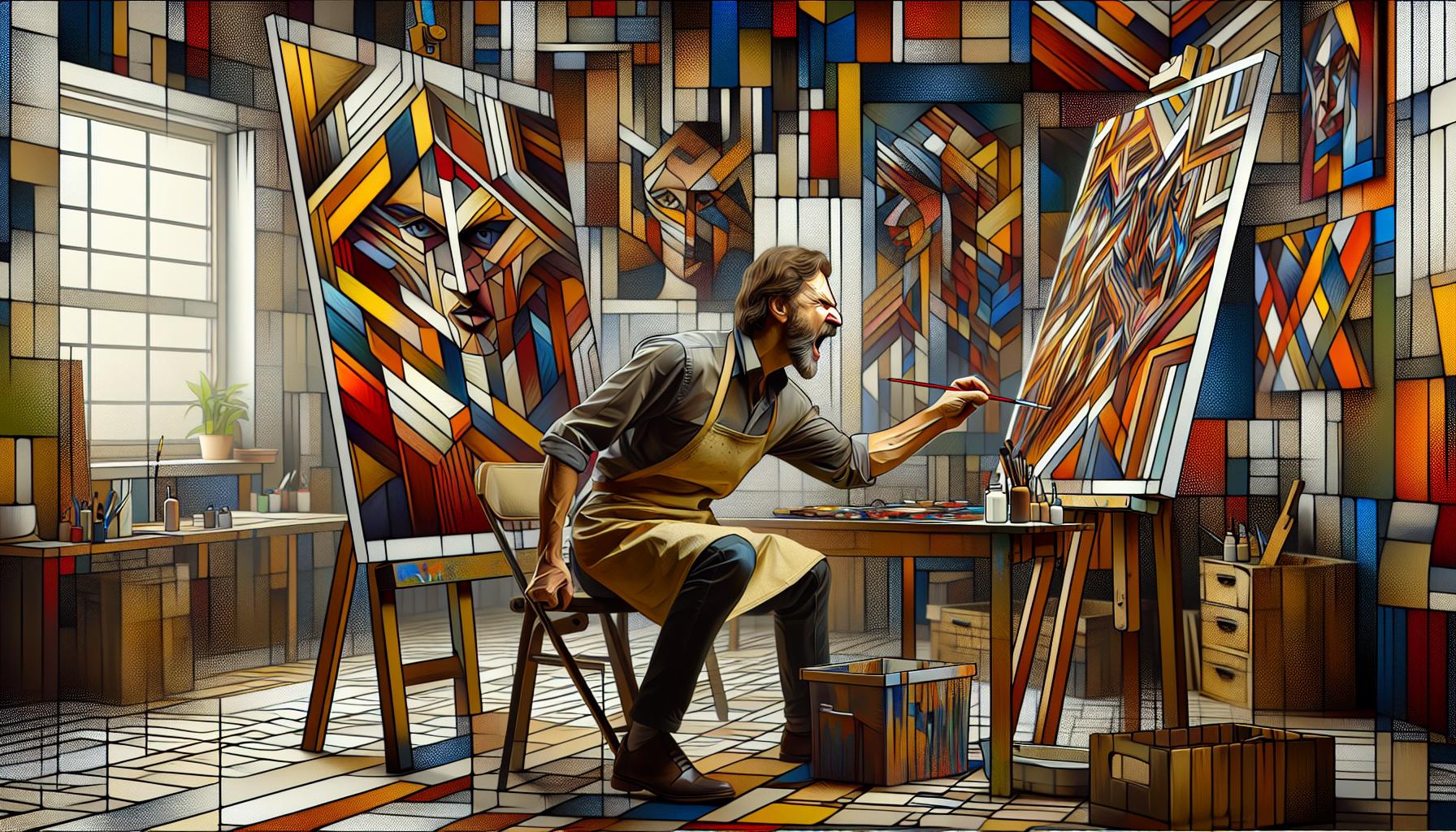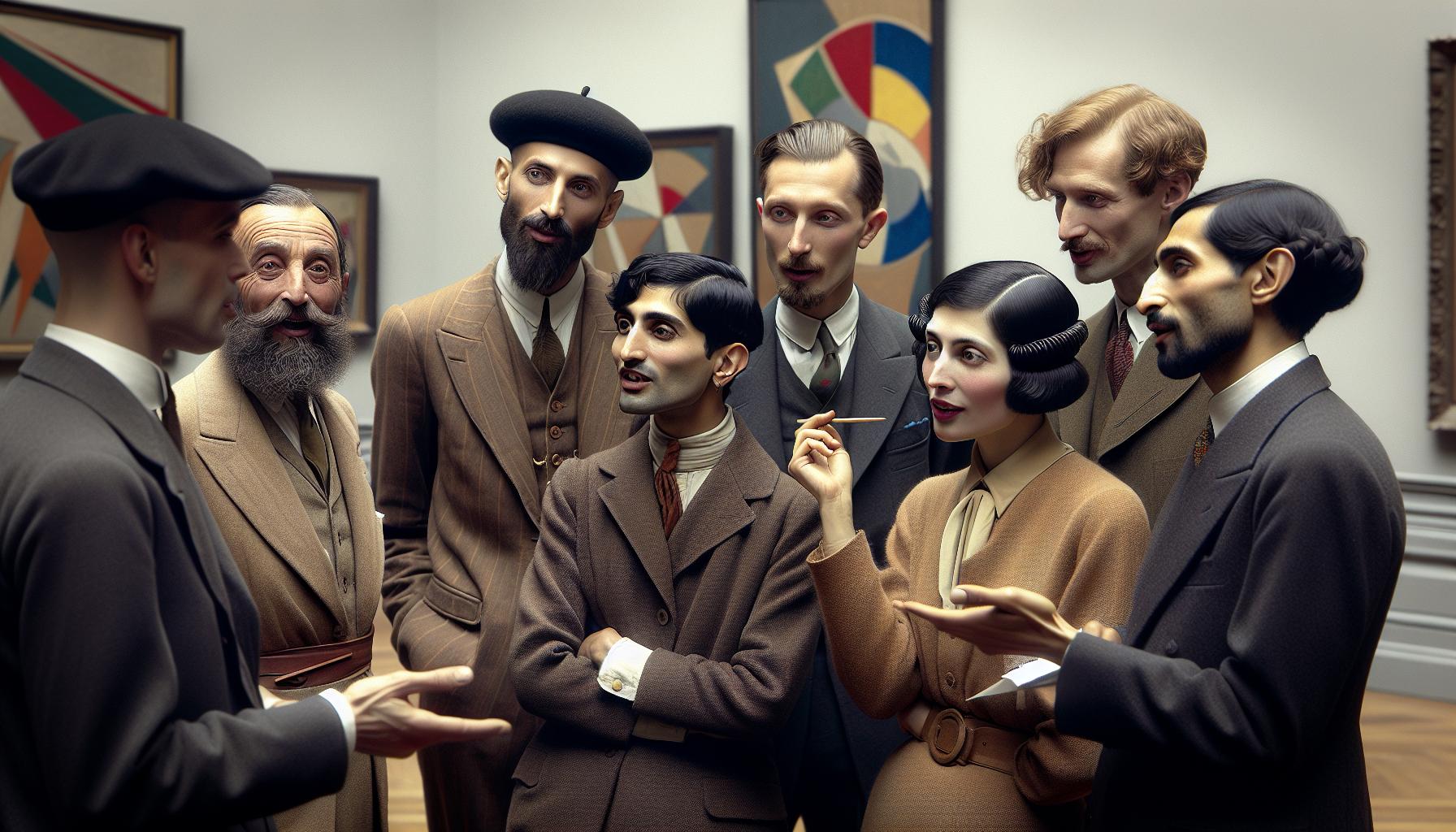Modern art took distinctly different paths on opposite sides of the Atlantic during the 20th century. While European artists were crafting their artistic identity through centuries-old traditions and war-torn landscapes America’s modern art movement blazed its own revolutionary trail.
In Europe Pablo Picasso and his contemporaries drew inspiration from classical themes and the aftermath of two world wars. Meanwhile American artists like Jackson Pollock and Mark Rothko were breaking free from European influence creating bold experimental works that reflected their nation’s youth and optimism. The contrast between these two artistic movements showcases a fascinating cultural divide that shaped the entire landscape of modern art.
How Was Modern Art In America Different From Europe?
Modern art movements emerged differently across the Atlantic during the early 20th century. European modernism developed through established art centers in Paris, Berlin and Vienna between 1905-1939. American modern art gained momentum in New York City during the 1940s-1950s.
European artists embraced distinct movements:
- Cubism transformed perspective through geometric abstraction
- Surrealism explored dreams and the subconscious mind
- Dadaism rejected traditional artistic values
- Expressionism conveyed intense emotional experiences
American modern art movements focused on:
- Abstract Expressionism emphasized spontaneous painting techniques
- Color Field painting explored pure color relationships
- Pop Art incorporated commercial imagery and mass media
- Minimalism reduced art to basic geometric forms
Key differences shaped these regional developments:
| Factor | Europe | America |
|---|---|---|
| Cultural Context | Post-war trauma | Economic prosperity |
| Artistic Heritage | Classical traditions | Limited art history |
| Creative Centers | Multiple cities | New York dominance |
| Time Period | 1905-1939 | 1940s-1960s |
European artists maintained connections to historical artistic traditions while American artists created new approaches without these constraints. European galleries and museums supported established artistic hierarchies. American institutions promoted experimental work through newer exhibition spaces.
Metropolitan Museum curator Robert Beverly Hale observed in 1954 that European modern art emphasized intellectual concepts while American modernism focused on emotional expression through scale and gesture. This fundamental difference reflected broader cultural distinctions between the two regions during the mid-20th century.
European Modern Art: Foundations and Traditions

European modern art emerged from deep-rooted artistic traditions dating back centuries. The continent’s established cultural centers fostered revolutionary artistic movements that responded to rapid industrialization social upheaval between 1905-1939.
Cubism and Surrealism in Paris
Paris established itself as the epicenter of European modernism through two groundbreaking movements. Pablo Picasso Georges Braque developed Cubism in 1907, breaking traditional perspective by depicting objects from multiple viewpoints simultaneously. The movement challenged centuries of realistic representation through geometric fragmentation abstract forms.
Surrealism emerged in Paris during 1924 under André Breton’s leadership. Artists like Salvador Dalí Max Ernst explored the unconscious mind through dreamlike imagery automatic drawing techniques. The movement drew inspiration from Sigmund Freud’s psychoanalytic theories, producing works that merged reality with fantasy in unprecedented ways.
The German Expressionist Movement
German Expressionism flourished between 1905-1925, centered in Dresden Berlin. Die Brücke artists including Ernst Ludwig Kirchner Emil Nolde created emotionally charged works using bold colors distorted forms. Their raw aesthetic reflected industrial society’s psychological impact on modern life.
Der Blaue Reiter group, led by Wassily Kandinsky Franz Marc, pushed abstraction further through spiritual metaphysical approaches to art. These artists emphasized color’s emotional power, creating works that expressed inner feelings rather than external reality. The movement’s influence spread throughout Europe, inspiring subsequent generations of abstract artists.
American Modern Art’s Unique Character

American modern art developed distinctive characteristics that set it apart from European traditions in the mid-20th century. The movement established its own identity through bold experimentation and a fresh perspective on artistic expression.
Breaking Free From European Influence
American artists rejected traditional European artistic conventions after World War II. New York City emerged as a vibrant cultural center, replacing Paris as the global art capital. Artists embraced large-scale canvases to create dramatic visual statements that departed from European aesthetic principles. The American art scene developed innovative techniques like action painting and color field painting to distance itself from European formalism. Museums including the Museum of Modern Art (MoMA) and the Whitney Museum showcased distinctly American artistic voices through dedicated exhibitions between 1945-1960.
Abstract Expressionism’s American Roots
Abstract Expressionism originated in New York during the 1940s as America’s first major international art movement. Artists like Jackson Pollock pioneered action painting through his distinctive drip technique in 1947. Willem de Kooning explored gestural abstraction through vigorous brushstrokes on massive canvases. Mark Rothko developed Color Field painting by creating expansive fields of color that evoked emotional responses. The movement reflected American values of individualism through spontaneous expression and monumental scale. The Betty Parsons Gallery and Sidney Janis Gallery promoted these artists through groundbreaking exhibitions from 1948-1955.
The Role of World Wars in Shaping Modern Art

World War I and World War II fundamentally transformed the landscape of modern art. These global conflicts triggered massive artistic migrations and shifted the center of artistic innovation from Europe to America.
European Artists in Exile
The outbreak of World War II forced numerous influential European artists to seek refuge in the United States. Max Ernst, Marcel Duchamp, Salvador Dalí, Piet Mondrian, Marc Chagall fled their home countries between 1933 and 1941. These expatriate artists brought their avant-garde techniques, theoretical knowledge and experimental approaches to America. Their presence influenced American artists through direct mentorship, exhibitions and collaborations. The Surrealist movement particularly thrived in exile, with artists like André Breton establishing temporary headquarters in New York. European émigrés introduced American artists to automatism, psychic improvisation and dream imagery techniques that later inspired Abstract Expressionism.
New York as the New Art Capital
New York emerged as the global art capital during World War II while Paris remained under German occupation. The city attracted European master artists, collectors, dealers and critics who established influential galleries and art schools. Peggy Guggenheim opened Art of This Century gallery in 1942, showcasing both European and American avant-garde artists. The Museum of Modern Art expanded its collection and influence through significant acquisitions and exhibitions. American artists gained direct access to European modernist works and ideas through these institutions. The presence of European artists combined with America’s economic prosperity transformed New York into the world’s leading center of artistic innovation by 1945.
Cultural and Social Influences on Modern Art
Cultural forces shaped distinct artistic expressions in America and Europe during the modern art movement. Social contexts in these regions created fundamentally different approaches to artistic creation during the 20th century.
American Individualism vs European Collectivism
American modern art emphasized personal expression through autonomous creation, reflecting the nation’s focus on individualism. Artists like Jackson Pollock embraced spontaneous techniques that highlighted individual artistic freedom. This contrasted with European artists who often worked within established artistic communities or movements.
European artists maintained strong connections to collective artistic traditions, collaborating in groups such as Der Blaue Reiter in Munich or De Stijl in the Netherlands. Their work reflected shared cultural experiences, particularly the trauma of two world wars. The Parisian avant-garde demonstrated this collectivist approach through regular gatherings at cafes like Le Dome where artists exchanged ideas.
Urban Life and Industrial Impact
The rapid industrialization of American cities created unique artistic perspectives focused on steel structures, mechanical forms, and urban landscapes. Artists like Joseph Stella captured New York’s architectural grandeur in geometric compositions, while Charles Sheeler documented industrial sites through precise photographic-style paintings.
European artists responded differently to urbanization, incorporating traditional architectural elements into their modern compositions. Paris-based artists maintained connections to historical urban spaces, while German Expressionists depicted industrial cities with emotional intensity. The Futurist movement in Italy celebrated mechanical progress through dynamic representations of speed and motion in urban environments.
The Legacy of Different Modern Art Approaches
European modern art’s influence persists in contemporary museum collections, with Paris’s Centre Pompidou housing 3,500 significant modernist works. Major European movements like Cubism continue to shape artistic education through their theoretical frameworks and technical innovations.
American modernism’s impact manifests in the global art market, where Abstract Expressionist pieces command premium prices. Jackson Pollock’s “Number 17A” sold for $200 million in 2016, demonstrating the enduring value of American modern art.
The distinct approaches created lasting effects on artistic practice:
- European Legacy
- Structured theoretical frameworks in art education
- Integration of classical elements in contemporary art
- Emphasis on formal artistic training
- Continuation of artist collectives tradition
- American Legacy
- Focus on individual artistic expression
- Large-scale abstract compositions
- Commercial gallery system expansion
- Integration of popular culture elements
Modern museum curation reflects these regional differences:
| Region | Characteristic Display Methods | Representative Museums |
|---|---|---|
| Europe | Chronological arrangement | Tate Modern, London |
| America | Thematic organization | MoMA, New York |
The divergent paths established during the modern period created distinct institutional structures. European art schools maintain traditional atelier systems, while American institutions embrace experimental teaching methods. These approaches continue to influence contemporary artists through different educational models, exhibition practices and market structures.
Contemporary artists draw from both traditions, creating hybrid forms that merge European theoretical rigor with American experimental freedom. Galleries worldwide display this synthesis, showcasing works that combine formal European techniques with American scale and expressiveness.
The distinct paths taken by modern art in America and Europe showcase how cultural context social influences and historical events shape artistic expression. While European modernism emerged from centuries of artistic tradition and the impact of world wars American artists embraced a fresh experimental approach fueled by economic prosperity and cultural independence.
Today these unique artistic philosophies continue to influence contemporary art practices worldwide. The synthesis of European theoretical foundations and American creative freedom has enriched the global art scene creating new possibilities for artistic expression. This dynamic interplay between traditions demonstrates how regional differences in modern art have contributed to the diverse and vibrant landscape of contemporary visual culture.



